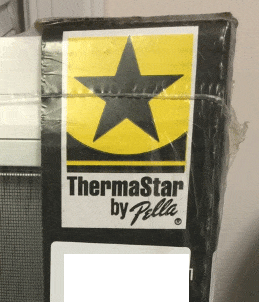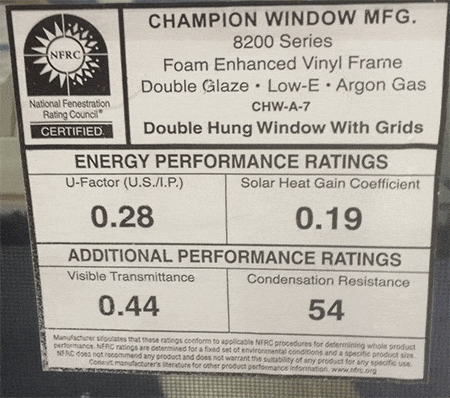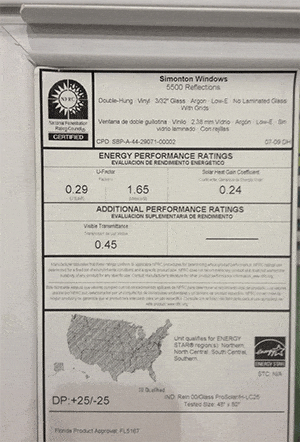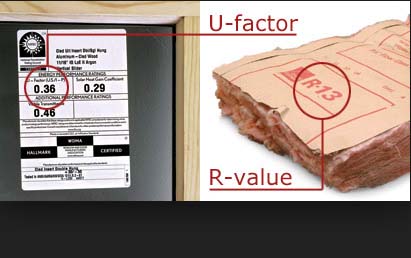The ThermaStar by Pella Series 10 window is a new construction vinyl window and it offers a great way to illustrate the differences between new construction and replacement windows.
It’s not a fantastic window, but it is widely available. This model is distributed at Lowes stores all over the place. We bought one at a store in Northern Virginia and you can probably find one at a store new you too.
We’ll get deep into the physical and philosophical differences between a new construction window and a replacement window in a future post. For now, here’s what we mean by new construction.
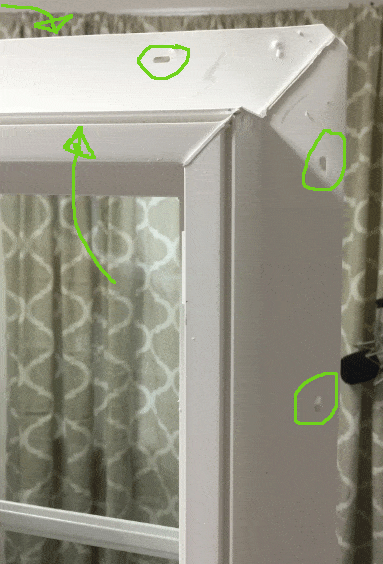
If you can see past my poor artwork, the nail fin is the part that sticks out all the way around the perimeter of the window. This fin goes behind the siding or prick on your home. It’s easy to install a window like this when you’re building a home, harder when you’re remodeling an existing home.
You’ll also notice this is a single hung window. That means the bottom opens up and down, but the top is fixed. The top section does not move, it does not tilt in for easy cleaning, it doesn’t really do anything at all. That is common with new construction windows and it’s a way they keep the costs down.
What’s good about the ThermaStar by Pella Series 10?
Well, it’s not expensive and that’s good. We found a pretty good selection of sizes at our neighborhood Lowes store. I bought a smaller on for this example because I was going to put it in the trunk of my car. The size of this one is 23.5″ x 37.5″ and it cost me something like $115. It includes grids in between the panes of glass and a full screen. Bigger windows do cost a little more.
A window “expert” might tell you why they don’t like this window (I will too), but everyone will agree that it’s not expensive.
Ok, it’s inexpensive, what else is good about it?
Here’s one you may not have expected. It’s pretty energy efficient. This is the NFRC sticker from the window I bought.
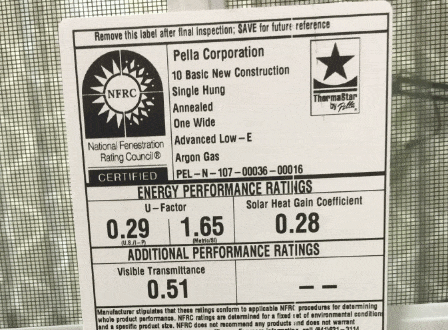
You can learn more about window efficiency ratings here, or you can take my word for it. These ratings are pretty solid. It has a decent U-Factor, good Solar Heat Gain Coefficient for the area and a reasonable Visible Transmittance rating. Overall, a solid performer, especially considering the price.
What’s not so good about the ThermaStar by Pella Series 10?
A cynic might say that everything is bad about a window like this, but I’m really trying to keep an open mind in dealing with products like this so I’ll be specific.
First, buying windows from stock sizes is risky. As you’d expect Lowes stocks a range of sizes, but they’re not likely to have every exact size you need. If you’re building a shed and you can cut the hole to match the window, but if you’re installing windows into an existing hole in y our house these might not fit right.
You can do your best to make them fit by modifying the opening, but you’re likely to end up with something that doesn’t look great or doesn’t seal as well as you might like. If you’re considering buying windows from Lowes you’re likely pretty handy, but the result might not be what you’re looking for.
Next, the finishing just doesn’t seem to be too great. As you can see in the picture here, the welds are HUGE.

The lack of attention to finishing touches like this is common on many inexpensive new construction windows. It is not specific to the ThermaStar by Pella Series 10 window. It is ugly and if you’re going to be living in this house for years to come details like this may be important to you.
Next, the screen is really flimsy. It comes with a half screen that is fixed in place. You may or may not prefer a screen that slides up and down, but this screen doesn’t move at it feels flimsy.
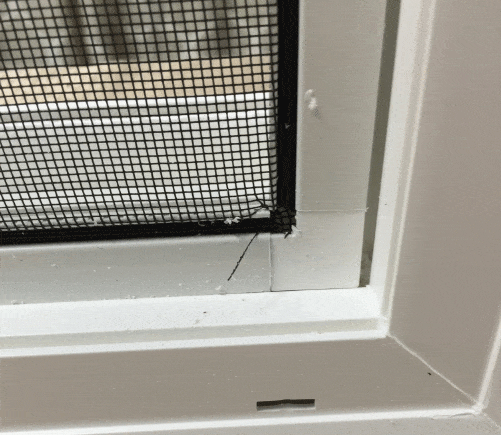
We could go on and on about why this is a cheep screen, but we’ll spare yo the details. If you get these windows just be really careful with them.
In the above picture you’ll also see the weep holes in the bottom of the frame. It’s that rectangular hole in the bottom center of the picture. That is a channel for water to get out. It’s a bit of an older design, and they have the opportunity to get clogged or filled up with junk.
So what’s the bottom line?
Well, if you decide this morning that you want to install some new windows in the shed you’re building this afternoon these would be an easy and cheep way to get the project done.
If speed and price are your two driving factors you might want to go for it. If you’re looking for a great fit and great quality you can probably find a better value in a nicer custom made window without braking the bank.
For now, you can take a look through the rest of our window reviews here or if you have a great suggestion for a future Pella window review or window related article just post a comment right here.

